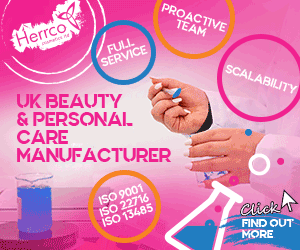The UV conference hosted by BASF in Paris launched the Sunscreen Simulator. It has become an important reference tool for those filters that are allowed and to what level in all the major markets around the world. It is also the first step in estimating what SPF and UVA protection to expect from various combinations of UV filters.
Referring to the Sunscreen Simulator, it is disappointing to see that there are still only three UVA filters with global approval. They are butyl methoxydibenzoylmethane (BMBM) at 3%, known as Avobenzone in the US; terephthalylidene dicamphor sulfonic acid (TDSA) at 3%, known as Ecamsule in the US; and zinc oxide to 25%. Because of the difficulties of getting new filters approved there have not been any new additions worldwide in the past 12 months. But, at last, zinc oxide has EU approval – although it’s not as yet listed in Annex VI of the European Cosmetics Regulation.
The A-Z Of Zinc
Approval of zinc oxide as a sun filter by the EU has stimulated interest among suppliers that are looking at ways to improve its clarity and sensual feel on skin. Zinc oxide has consumer appeal because of its long history in skin care products, such as calamine lotion and diaper rash creams, and it gains approval by dermatologists for patients with skin disorders, or those suffering sensitisation or irritation from chemical-based sunscreens. It can provide sufficient broad spectrum protection to be the sole UV filter in a product or can be used with an additional UVB filter to give sufficient UVA protection in high SPF compositions.
Under its ZinClear trade name, Antaria provides a 50% zinc oxide dispersion in C12-C15 alkyl benzoate and caprylic/capric triglyceride, and in Simmondsia chinensis (jojoba) seed oil for natural claims.
It is also available at 55% in neopentyl glycol diheptanoate for a lighter, drier feel and at 65% in coco-caprylate/caprate. Antaria claims that the zinc oxide particles in its ZinClear dispersions have a unique porous structure that provides a closer match between the refractive index of the particle and the refractive index of the emollient, thus achieving a very high level of transparency. It claims this technology allows ZinClear to offer transparencies exceeding those of first generation nanomaterial inorganic products.
Grant Industries offers zinc oxide dispersed in water, caprylic/capric triglyceride and cyclopentasiloxane and dimethicone, and in mixtures of these with C12-15 alkyl benzoate.
The zinc oxide dispersed in cyclopentasiloxane or dimethicone is treated with PEG-10 dimethicone, and Grant claims this offers enhanced compatibility with silicone-based systems, including elastomer gels, emulsifiers and oils. Grant also supplies Granpowder Z-35, which is a solid dispersion of ultra-fine zinc oxide in polymethylsilsesquioxane and Granpowder T-35, titanium dioxide dispersed in polymethylsilsesquioxane. The particles are adsorbed onto the surface of the polymer through a dehydration mechanism, which avoids the typical unpleasant sensorial properties of metal oxide sun filters. Suggested applications include colour cosmetic formulations, such as foundations, pressed powders, lipsticks and anhydrous make-up.
Although dispersions simplify processing, metallic oxides in powder form are still popular and Kobo Products claims that its UV Balance Powder 100 (INCI: Titanium dioxide, alumina, hydrogen dimethicone) is attenuation grade TiO2 (nano) that can provide UV balanced protection with one unit of UVA protection for every three units of UVB protection. This material is also available with a jojoba surface treatment, as well as in a silicone dispersion, enabling easy UV-balanced formulating. Sunjin T-80 from Sunjin Beauty Products consists of a non-nano TiO2 that enables formulators to use just one UV filter to develop broad-spectrum sun care products. Sunjin claims that T-80 can provide UVB protection comparable with that of 15nm TiO2 and UVA protection better than that of 35nm ZnO. The T-80 series exhibits good photostability and is alumina-free. This material is available with a range of surface treatments and in a variety of dispersions.
Protection Problem Solvers
When titanium dioxide was first introduced as a possible UV filter formulators were faced with the difficulties of achieving dispersions without agglomeration of particles and providing UVB protection with non-whitening on the skin.
It was about the same time that the importance of UVA protection and the problems of photo-instability in sun care products became generally known and this gave impetus to the use of microfine metallic oxides. Producers made improvements in surface treatments and controlled particle size distribution, and dispersions in a wide variety of carrier liquids became available.
The Innovation Company offers






